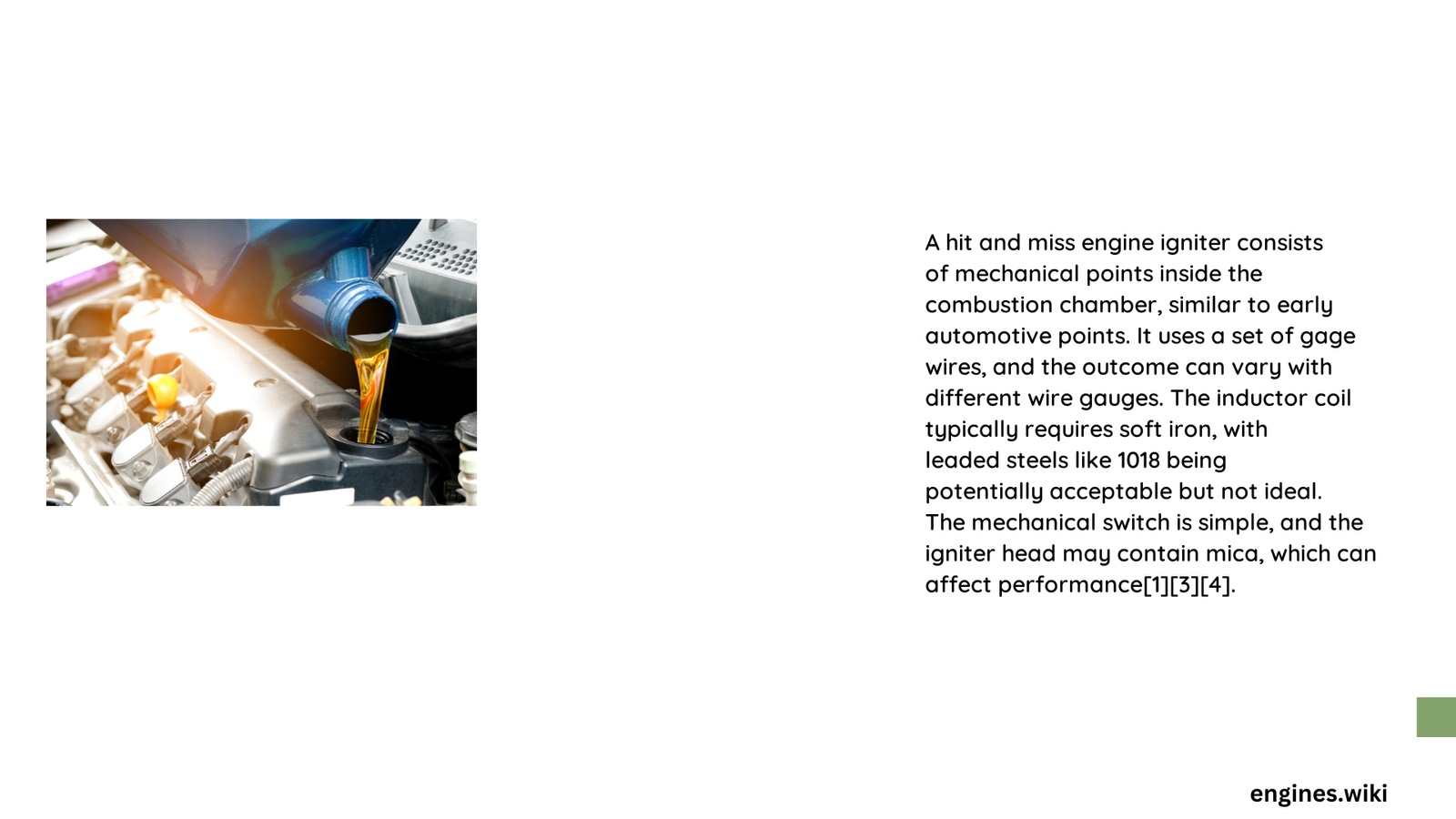Hit and miss engine igniters represent a fascinating technological innovation in early internal combustion engine design, providing a critical mechanism for fuel ignition through sophisticated electrical contact systems or spark plug technologies. These precision-engineered components enable controlled combustion by generating precise electrical sparks at specific engine cycle moments, representing a pivotal advancement in mechanical power generation during the early 20th century.
What Are Hit and Miss Engine Igniters?
Hit and miss engine igniters are specialized electrical systems designed to initiate combustion in vintage internal combustion engines. These systems generate electrical sparks through two primary mechanisms: make-and-break contact points and modern spark plug configurations.
Types of Hit and Miss Engine Igniters
| Igniter Type | Power Source | Spark Generation Method | Typical Application |
|---|---|---|---|
| Make-and-Break | Low-tension Magneto | Contact Point Separation | Historical Engines |
| Spark Plug | Battery/Magneto | High-Voltage Electric Spark | Modern Replica Engines |
How Do Make-and-Break Igniters Function?

Make-and-break igniters operate through a sophisticated mechanical-electrical interaction:
- Contact Mechanism:
- Stationary electrically insulated contact
- Rotating grounded contact on camshaft
-
Low-tension electrical power source
-
Spark Generation Process:
- Camshaft rotates
- Contacts separate
- Electrical arc jumps between points
- Fuel mixture ignites
What Components Comprise a Hit and Miss Engine Igniter?
Make-and-Break Igniter Components
- Electrical Contacts
- Material: Durable metal alloys
- Replacement Interval: 100-200 operational hours
-
Critical for consistent spark generation
-
Magneto System
- Generates low-tension electrical current
- Provides consistent power for spark generation
- Requires periodic maintenance
Spark Plug Igniter Components
- Spark Plug
- Standard automotive-style design
- Requires precise gap setting
-
Replacement every 50-100 operational hours
-
Ignition Coil
- Converts low voltage to high voltage
- Enables consistent spark generation
- Minimal maintenance requirements
How to Troubleshoot Hit and Miss Engine Igniters?
Common Diagnostic Techniques
- Visual Inspection
- Check contact point wear
- Examine spark plug condition
-
Verify electrical connections
-
Electrical Testing
- Use spark tester
- Measure voltage output
- Check timing synchronization
Potential Failure Indicators
- Inconsistent engine firing
- Weak or absent electrical spark
- Irregular combustion cycles
- Excessive component wear
What Installation Procedures Ensure Optimal Performance?
Preparation Requirements
- Tools Needed:
- Pliers
- Screwdrivers
- Spark tester
- Timing light
- Torque wrench
Installation Steps
- Carefully disassemble engine section
- Install contact points/spark plug
- Connect electrical systems
- Adjust timing mechanisms
- Perform comprehensive testing
What Maintenance Strategies Extend Igniter Lifespan?
- Regular cleaning of contact points
- Periodic lubrication of moving parts
- Consistent electrical system checks
- Timely component replacement
- Proper storage during non-operational periods
What Are Estimated Replacement Costs?
- Make-and-Break Igniter: $50-$200
- Spark Plug System: $30-$150
- Installation Time: 1-4 hours
Conclusion
Hit and miss engine igniters represent a remarkable intersection of mechanical engineering and electrical innovation, providing crucial insights into early power generation technologies.
